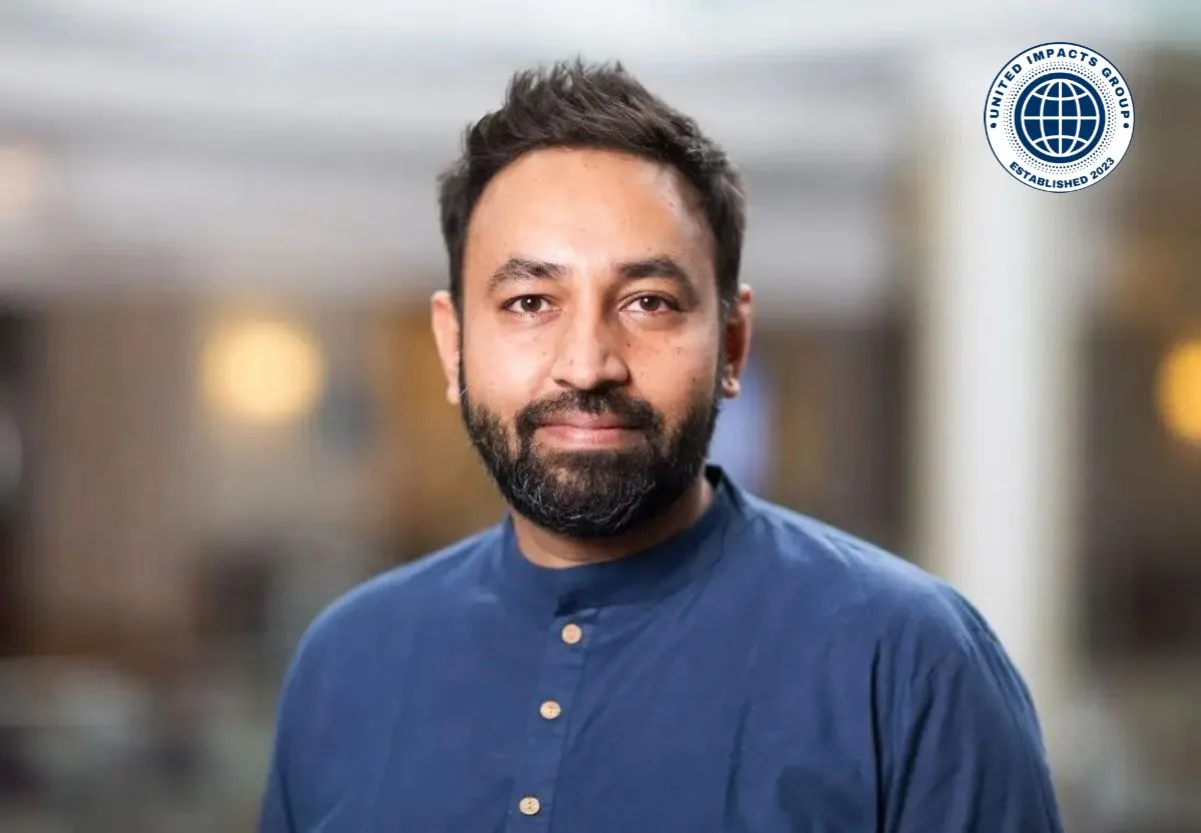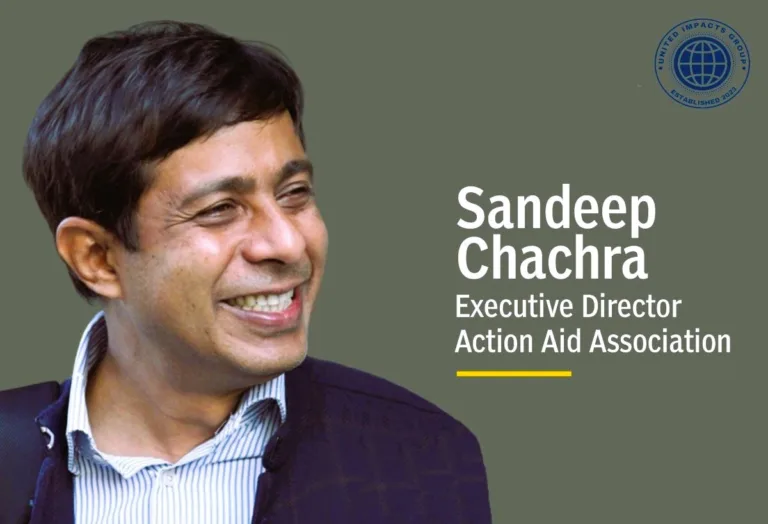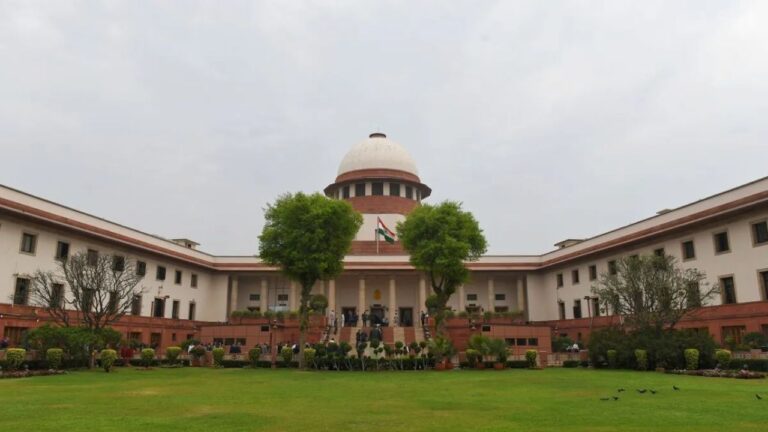
Exclusive Interview: Exploring the Expertise of Ishank Gorla, Programme Lead at GAIN
GAIN’s mission revolves around enhancing nutrition outcomes through the promotion of nutritious and safe food consumption, particularly among the most vulnerable individuals affected by malnutrition. Recognizing that there is no universal solution to address malnutrition, GAIN focuses on establishing partnerships and implementing tailored programs utilizing diverse models and approaches.
To gain further insights into GAIN’s operations, we have conducted an interview with Ishank Mikhail Gorla, the Program Lead at GAIN responsible for spearheading the Commercialisation of Biofortified Crops Program. Here are the details of the conversation:
1. How is GAIN tackling the issue of malnutrition in India across different levels?
As an organization, we collaborate with national, regional, and global alliances that offer technical, financial, and policy support to a wide range of public and private entities. Our primary emphasis lies in directing attention towards the sources of people’s food, namely markets. Consequently, we prioritize identifying means to transform and enhance the role of businesses and governments in shaping food systems to improve nutrition outcomes.
2. What are the programs and initiatives implemented by GAIN to address malnutrition?
GAIN’s endeavors to improve the consumption of safe and nutritious food revolve around three strategic objectives:
a) Increasing consumer demand for safe and nutritious food
b) Enhancing accessibility to safe and nutritious food
c) Strengthening the enabling environment for the development, implementation, and expansion of effective programs
These objectives are interconnected: for sustainable change, consumers must actively demand more nutritious food from both public and market sources. This demand must be met and amplified by collaborative efforts among businesses, governments, and civil society to enhance the availability and affordability of safe and nutritious food.
At the foundation of these efforts lies an environment that supports the discovery of solutions, necessitating policies, legislation, codes of conduct, accountability mechanisms, and data to foster partnerships capable of improving diets and advancing nutrition status. To achieve these goals, GAIN, along with our partners in India, undertakes various programs throughout the food system.
(a). Large-scale food fortification (LSFF)
GAIN, a Liaison office established in India in 2006, recognized the severe issue of micronutrient malnutrition in the country. To tackle this problem, GAIN made large-scale food fortification (LSFF) its top priority and began its efforts in 2009. They developed an Integrated Programme Strategy, outlined in an approach paper, to guide their work in this field.
Throughout the past 15 years, GAIN has collaborated with national and state governments, as well as partners from the private sector, including SMEs, civil society organizations, and research institutions. Their main objective has been to implement Staple Food Fortification on a wide scale, aiming to enhance the overall quality of diets for the general population and specifically target the nutritional deficiencies faced by the most vulnerable individuals. By doing so, GAIN contributes significantly to improving India’s food system.
(b). Commercialisation of Biofortified Crops (CBC)
GAIN and HarvestPlus have joined forces to commercialize biofortified Zinc Wheat and Iron Pearl Millet in six states across India. The project, which began implementation in 2020, aims to promote the widespread adoption of nutrient-rich crops through partnerships with the seed and food industry. We collaborate with food processors, millers, aggregators, farmer groups, and other stakeholders in the value chain to accelerate the uptake of these biofortified crops at both the seed and grain levels.
Additionally, we actively engage with governments to encourage the inclusion of biofortified staples in social protection schemes. Furthermore, our partnership explores digital platforms to foster innovative solutions for commercialization while simultaneously improving the nutritional status of vulnerable smallholder farmers.
These objectives are interconnected: to achieve sustainable change, it is crucial for consumers to demand more nutritious foods from both public and market sources. Meeting and expanding this demand requires collaboration between businesses, governments, and civil society to enhance the availability and affordability of safe and nutritious foods. A supportive environment is essential, encompassing policies, legislation, codes of conduct, accountability mechanisms, and data that facilitate partnerships to improve diets and advance nutrition. In line with these objectives, GAIN and our partners in India undertake various programs within the food system to drive positive change.
(c). Workforce nutrition
The workforce nutrition program in India collaborates with international tea brands, tea estate managers, the Indian Tea Board, and local tea associations to implement successful initiatives aimed at enhancing knowledge and access to nutritious food for workers and their families. Since its initiation in 2016, the program has positively impacted over 43,000 tea workers and their families. GAIN in India plans to expand the program to an additional 200 tea estates in Assam, India.
(d). Decentralized Production of Fortified Blended Food (Concluded/not under implementation)
GAIN played a key role in setting up and running four production facilities aimed at manufacturing and distributing a high-quality fortified blended nutritious food product. This initiative reached around 70,000 specific beneficiaries, including children, pregnant women, and lactating mothers, in Karnataka and Bihar. GAIN’s approach, which involves community-owned production units operated and managed by women’s groups, proves to be a sustainable and economically efficient solution. The production process follows industrial standards and ensures quality control, making it simple to monitor and replicate.
(e). Integrated Management of Acute Malnutrition (IMAM): POSHAN (Concluded/not under implementation)
The POSHAN (Positive and Optimum care of children through a Social Household Approach for Nutrition) project was carried out in Rajasthan to address acute malnutrition at the community level. The initiative was led by the National Health Mission and the Government of Rajasthan, with support from development partners including GAIN, Action Contre la Faim, and UNICEF. Implemented in 50 blocks across 20 districts of Rajasthan, the POSHAN project employed an Integrated Management of Acute Malnutrition (IMAM) approach. Its main focus was on preventing and addressing acute malnutrition in children through home-based care and treatment. This involved providing Energy Dense Nutrition Supplementation (EDNS) to severely acute malnourished (SAM) children, with an emphasis on early intervention and correction.
3. Tell me about GAIN’s multi-sectoral approach to alleviating the problem of malnutrition.
GAIN is dedicated to enhancing food systems and promoting the consumption of nutritious and safe food for everyone, particularly the most vulnerable to malnutrition. What sets GAIN apart is its emphasis on food systems and diet quality, its collaborative approach through alliances, and its ability to effectively engage with the private sector.
Our primary objective is to provide support and guidance to the Government of India, state governments, businesses, and development partners in their efforts to develop and implement food and nutrition plans that promote improved nutrition outcomes. To achieve this, we collaborate with governments, businesses, and civil society stakeholders to:
- Design and implement food-related policies and initiatives that enhance the consumption of safe and nutritious food.
- Establish ourselves as leaders in the field by evaluating and analyzing programs and policies aimed at improving the consumption of safe and nutritious food.
- Facilitate the expansion of proven programs to maximize their impact and reach a wider audience.
4. Food fortification and Biofortification- How is it helping in achieving nutritional security in India by 2030?
With the prevalence of malnutrition in India being a significant concern, there is an urgent requirement to enhance nutritional interventions and food security initiatives through effective governance, targeted policies, and evidence-based approaches. In developing nations like India, a crucial strategy to address the malnutrition crisis is Large-scale food fortification (LSFF), which involves adding essential nutrients to commonly consumed foods during processing.
By fortifying widely consumed food items like wheat and maize flour, rice, edible oil, and condiments such as salt, LSFF can have a substantial and affordable impact, benefiting billions of individuals by combating vitamin and mineral deficiencies and safeguarding overall health. In a bold endeavor to eliminate hidden hunger and achieve the goal of a malnutrition-free society, the government has intensified rice fortification efforts to bridge nutrient gaps in diets and enhance health outcomes within a short span of time.
Biofortification complements existing interventions like supplementation and industrial food fortification in alleviating deficiencies. However, it offers two key advantages: long-term cost-effectiveness and the ability to reach marginalized rural populations who often lack access to other interventions.
Malnutrition poses a multifaceted problem, particularly for economically disadvantaged and vulnerable segments of society who lack the means to access well-rounded and diverse diets. While there is no singular solution to address micronutrient deficiencies, two population-based strategies, namely industrial fortification and biofortification, have demonstrated their effectiveness in reducing such deficiencies when consumed regularly. Embracing these approaches can play a pivotal role in attaining nutritional security in India.






